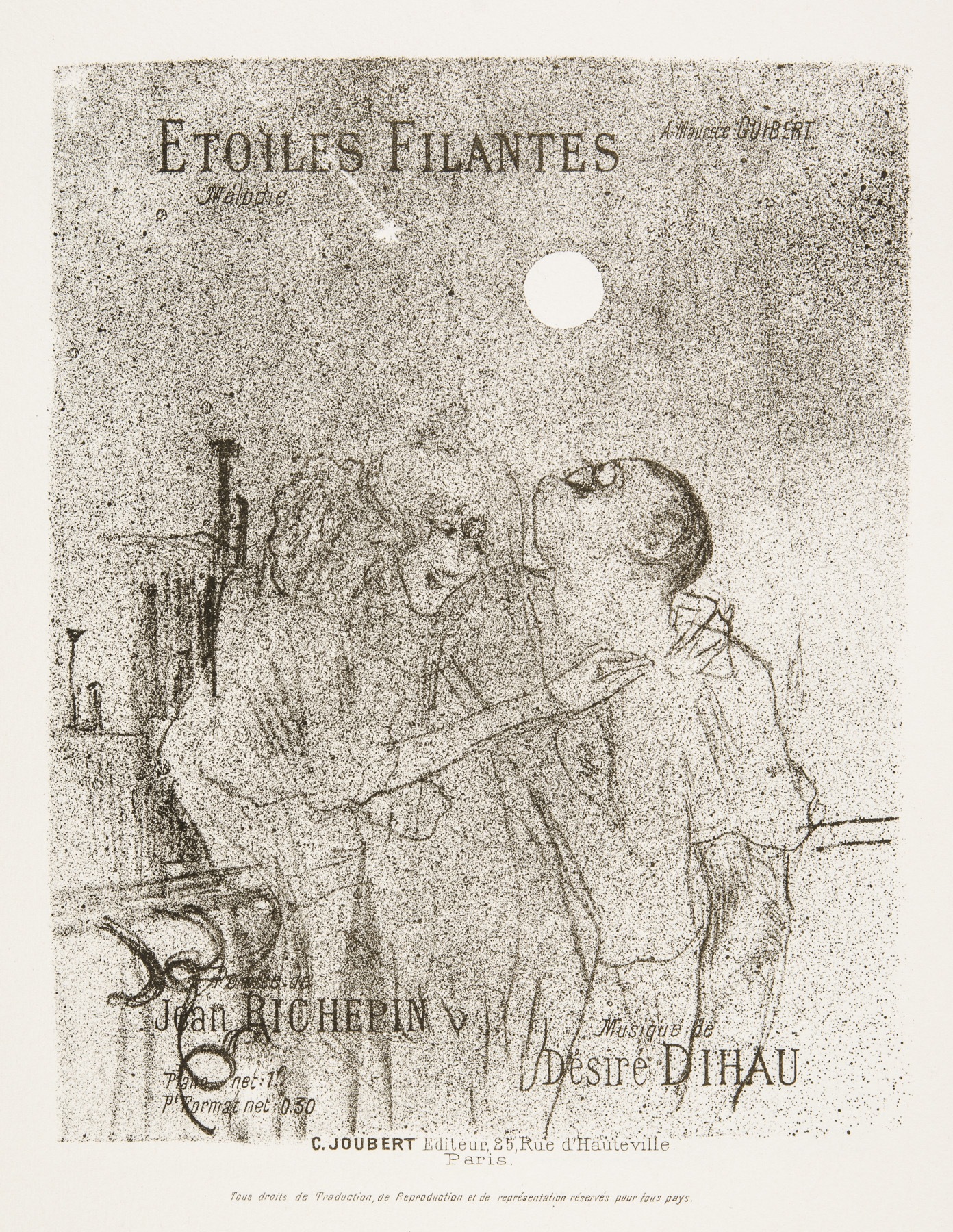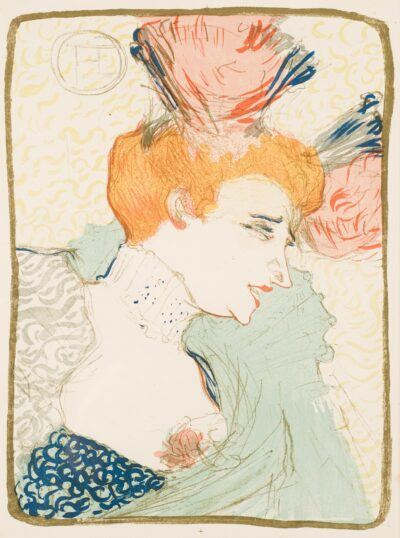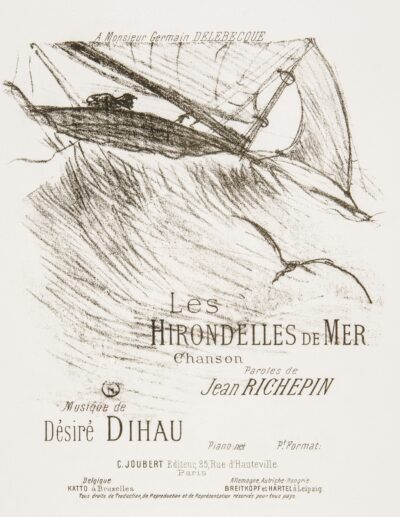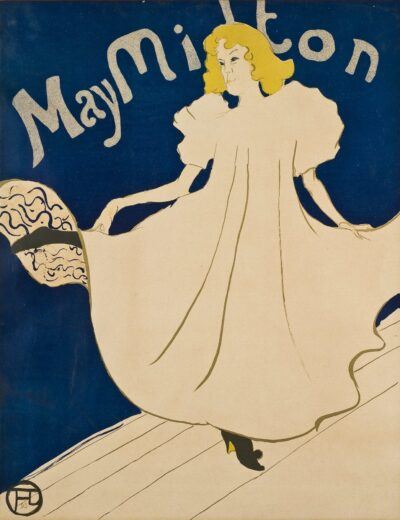ETOILES FILANTES
Henri de Toulouse-Lautrec
ETOILES FILANTES
Lithograph
1895-96
An original Henri de Toulouse-Lautrec Lithograph print.
(Shooting Stars)
1895-96
Original lithograph printed in brown-black ink on Arches wove paper.
A fine impression of Wittrock’s only state Adriani’s second state of two, printed after the addition of the song sheet text to the stone, from the edition of 450 in this color (there were 50 additional impressions printed in olive-green), numbered in pencil in the margin lower left (apart from the first edition of 1895 without text, the song sheet edition of c. 1895 with text, and the posthumous edition of 1935 also with text). Plate VIII of fourteen from the album Quatorze Lithoghraphies Originales de Toulouse-Lautrec pour Illustrer des Chansons. Published by A.C. Mazo & Cie., Paris, 1978; printed by Atelier Fernand Mourlot, Paris. The stone has since been cancelled and is on deposit at the Cabinet des Estampes at the Bibliotheque Nationale, Paris.
Catalog: Delteil 136; Adhémar 161; Wittrock 131; Adriani 152 ii/ii.
10 1/2 x 8 1/8 inches
Sheet Size: 16 1/2 x 12 5/8 inches
A song sheet cover from Joubert’s publication of fourteen melodies by Désiré Dihau, this lithograph illustrates Jean Richepin’s lyrics for the song Shooting Stars. Lautrec amusingly portrayed a drunken pair perched on a balcony, overlooking rooftops and chimneys. As the man – a funny caricature of Lautrec’s friend Maurice Guilbert to whom the song is dedicated – looks over his shoulder, his sodden orb reflects the moon and a shooting star. Originally he was to have exclaimed dumbly, “Oh no, look, the sun.” Guilbert appears as a comical character in many of Lautrec’s works. A great fancier of Paris night-spots, he was an agent for Möet & Chandon Champagne and a sometime artist who traveled and caroused with Lautrec.
The effect of night is created on the printing stone by a heavy crachis which envelops the figures in the same dark atmosphere as the sky. The moon and star are simply areas reserved from the ink spatter by applying paper stencils or a masking medium, and the tail of the star was made by scraping the ink away. Lautrec was a master of these techniques which he used in simple black and white lithographs like this one, or in more complex color lithography.




